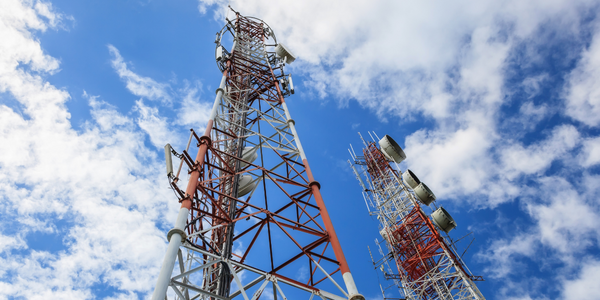Download PDF
Accelerating Enterprise Digitalization: Deutsche Telekom’s Cloud of Things IoT Platform

Technology Category
- Functional Applications - Enterprise Resource Planning Systems (ERP)
- Platform as a Service (PaaS) - Application Development Platforms
Applicable Industries
- Equipment & Machinery
- Telecommunications
Applicable Functions
- Product Research & Development
- Sales & Marketing
Use Cases
- Inventory Management
- Real-Time Location System (RTLS)
Services
- Cloud Planning, Design & Implementation Services
- System Integration
The Challenge
Deutsche Telekom, a global leader in Machine-to-Machine (M2M) and Internet of Things (IoT) communications, was faced with the challenge of quickly establishing a presence in the fast-paced IoT market. The company needed to find a technology partner that could provide a fully rebrandable platform to launch a solution that could get customers up and running in minutes. Deutsche Telekom recognized that its enterprise customers, including Dürkopp Adler, Deutsche Afrika Linien, HUBTEX, and Definitiv, needed to transform their businesses to remain globally competitive and innovative. The company aimed to simplify IoT adoption and enable its enterprise customers to efficiently implement end-to-end IoT solutions. This would allow these businesses to increase end-customer service levels and customer satisfaction, lower operational costs, and transition from product-centric to service-centric companies.
The Customer
Deutsche Telekom Group
About The Customer
Deutsche Telekom Group is a tier-1 global carrier that has long maintained a leadership position in Machine-to-Machine (M2M) and Internet of Things (IoT) communications. The Group’s solutions promote the digitalization of manufacturing—sometimes called the Industrial Internet or Industry 4.0. Through its IT and consultancy services company T-Systems, Deutsche Telekom delivers a wide breadth of offerings to global enterprises. The company has built a wide ecosystem of affiliates, partners, and services around its “Cloud of Things” IoT platform powered by Cumulocity IoT. Deutsche Telekom is a leader in delivering the promise of Industry 4.0, moving from a managed connectivity provider to a full enterprise solution provider and driving additional service revenues.
The Solution
Deutsche Telekom built a wide ecosystem of affiliates, partners, and services around its “Cloud of Things” IoT platform powered by Cumulocity IoT. The company adopted Cumulocity’s IoT platform and associated services into its “Cloud of Things” offering in 2015. These services enabled Deutsche Telekom to provide a truly end-to-end solution, allowing enterprise customers to focus on their core business. The services provided by Cumulocity IoT allowed Deutsche Telekom to address customers’ critical IoT success factors in their digital transformation, including the fast development, agile refinement, and reliable deployment of commercial proof of concepts. The Cumulocity IoT solution adopted by Deutsche Telekom provides a fully rebranded and robust multi-tenant environment implemented in a Deutsche Telekom data center. In addition, Cumulocity offered a productized Proof-of-Concept service and go-to-market accelerators, which fulfill the critical success factors of easy development and early-life support for IoT solutions.
Operational Impact
Quantitative Benefit
Related Case Studies.

Case Study
Smart Water Filtration Systems
Before working with Ayla Networks, Ozner was already using cloud connectivity to identify and solve water-filtration system malfunctions as well as to monitor filter cartridges for replacements.But, in June 2015, Ozner executives talked with Ayla about how the company might further improve its water systems with IoT technology. They liked what they heard from Ayla, but the executives needed to be sure that Ayla’s Agile IoT Platform provided the security and reliability Ozner required.

Case Study
IoT enabled Fleet Management with MindSphere
In view of growing competition, Gämmerler had a strong need to remain competitive via process optimization, reliability and gentle handling of printed products, even at highest press speeds. In addition, a digitalization initiative also included developing a key differentiation via data-driven services offers.

Case Study
Predictive Maintenance for Industrial Chillers
For global leaders in the industrial chiller manufacturing, reliability of the entire production process is of the utmost importance. Chillers are refrigeration systems that produce ice water to provide cooling for a process or industrial application. One of those leaders sought a way to respond to asset performance issues, even before they occur. The intelligence to guarantee maximum reliability of cooling devices is embedded (pre-alarming). A pre-alarming phase means that the cooling device still works, but symptoms may appear, telling manufacturers that a failure is likely to occur in the near future. Chillers who are not internet connected at that moment, provide little insight in this pre-alarming phase.

Case Study
Premium Appliance Producer Innovates with Internet of Everything
Sub-Zero faced the largest product launch in the company’s history:It wanted to launch 60 new products as scheduled while simultaneously opening a new “greenfield” production facility, yet still adhering to stringent quality requirements and manage issues from new supply-chain partners. A the same time, it wanted to increase staff productivity time and collaboration while reducing travel and costs.

Case Study
Integration of PLC with IoT for Bosch Rexroth
The application arises from the need to monitor and anticipate the problems of one or more machines managed by a PLC. These problems, often resulting from the accumulation over time of small discrepancies, require, when they occur, ex post technical operations maintenance.

Case Study
Robot Saves Money and Time for US Custom Molding Company
Injection Technology (Itech) is a custom molder for a variety of clients that require precision plastic parts for such products as electric meter covers, dental appliance cases and spools. With 95 employees operating 23 molding machines in a 30,000 square foot plant, Itech wanted to reduce man hours and increase efficiency.





